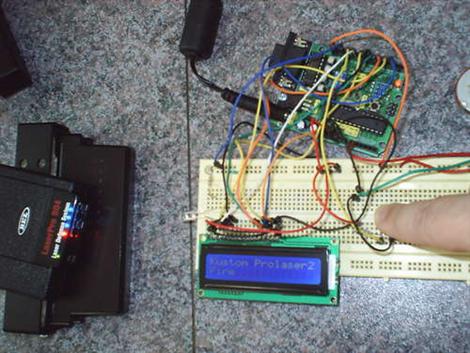
An exhibition just wrapping up at the Russian Frost Farmers Gallery in New Zealand presented an interactive artwork hack. Called the Radio Assisted Drawing Device (R.A.D.D), it is a plotter that mounts on the wall. It isn’t computer controlled, but rather relies on a remote control with two sticks to move the plotter Etch-a-Sketch style.
A clear gantry mounts vertically and travels along the top edge of the wooden backing. A slot cut in the acrylic steadies the plotter and allows for smooth vertical movement. Obviously built by hand, the mechanics seem to have tight tolerances for precise movements of the stylus. See the exhibit in the video after the break.
Wouldn’t you love to have one of these on the wall at your next party? It adds a whole new spin on a guest book.















